Complete Solutions to illustration of chapter ALKENES AND ALKADIENES of Class 11 book with complete answers and questions
| Class 11 | CHEMISTRY |
| Chapter | ALKENES AND ALKADIENES |
| CENGAGE CHEMISTRY | illustration |
| Number Of Questions | 62 |
| Academic Year | 2023-24 |
Name of the following as substituted derivatives of ethylene.
`(a)` `CH_(3)-CH=CH-CH_(3)`
`(b)` ` CI_(2)C=CHCI`
`(c)` `(CH_(3))_(2)C=CH_(2)`
`(d)` ` (CH_(2)=CH)_(2)C=CH_(2)`
`(e)` `(CH_(2)=CH)-CH=CH-(CH=CH_(2))`05:59View SolutionWrite the IUPAC names of the following.
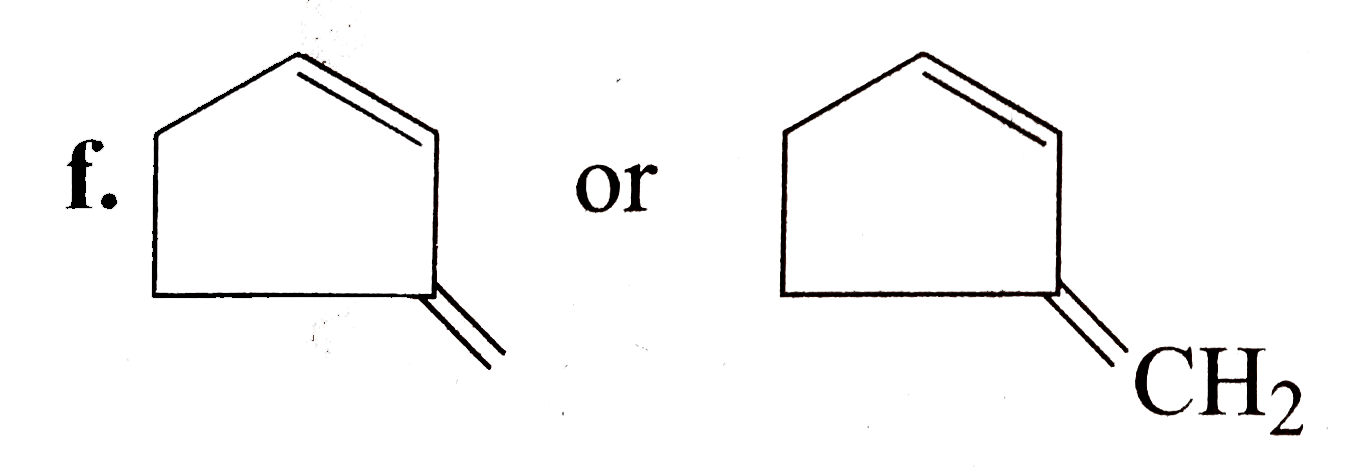
b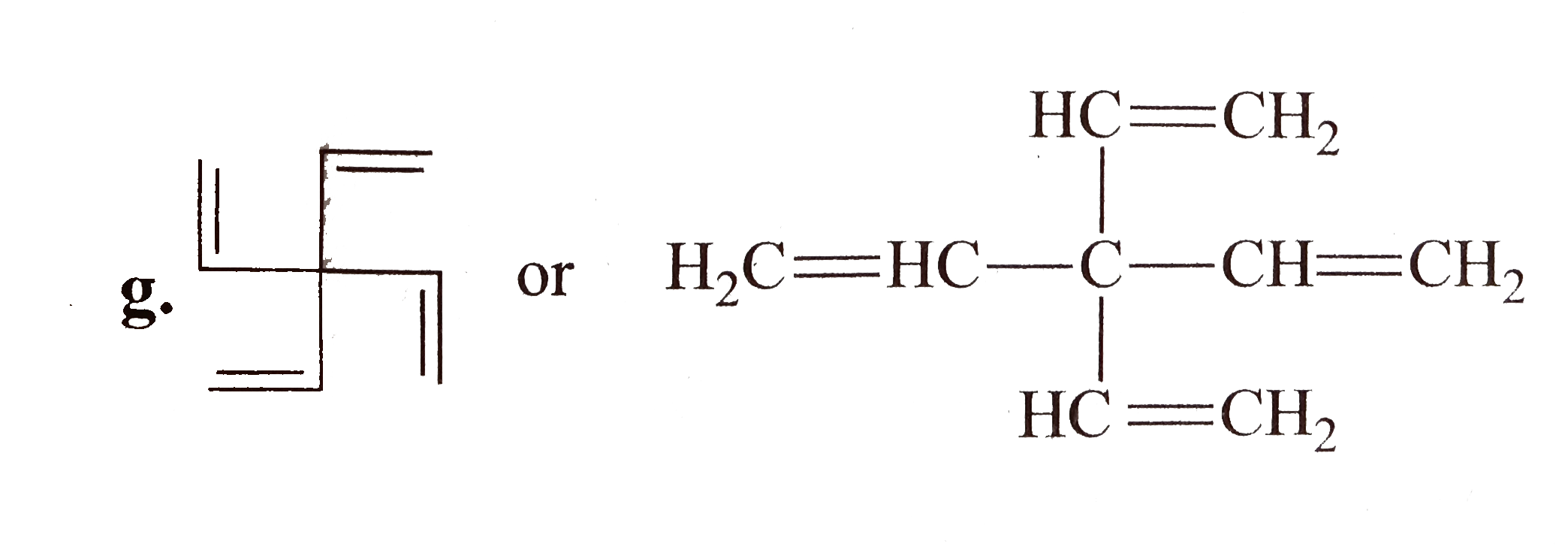 03:04View Solution
03:04View SolutionWrite the structures of the following compounds.
`a.` `3,7-` Dimethylocta`-1,3,6-` triene
`b.` `4-`Allyl`-3-` propenyl`-1,3-` cyclohexadiene
`c.` `2-` Ethenyl bicyclo `[4.40]-1,5,8-` decatriene
`d.` Bicyclo `[2.2.1]-2,5-` heptadiene06:43View SolutionWhich of the following compounds shows geometrical isomerism `(G.I.)`?
`a.` But`-2-` ene
`b.` `3-` Methyl but `-2-`enoic acid
`c.` `3-` Methyl pent `-2-` enoic acid
`d.` `3-` Phenyl prop `-2-` enoic acid.03:21View SolutionWhich of the following do not show `G.I.`?
`a.` 04:49View Solution
04:49View SolutionFrom the following `G.I.` is shown by `:`
`a.`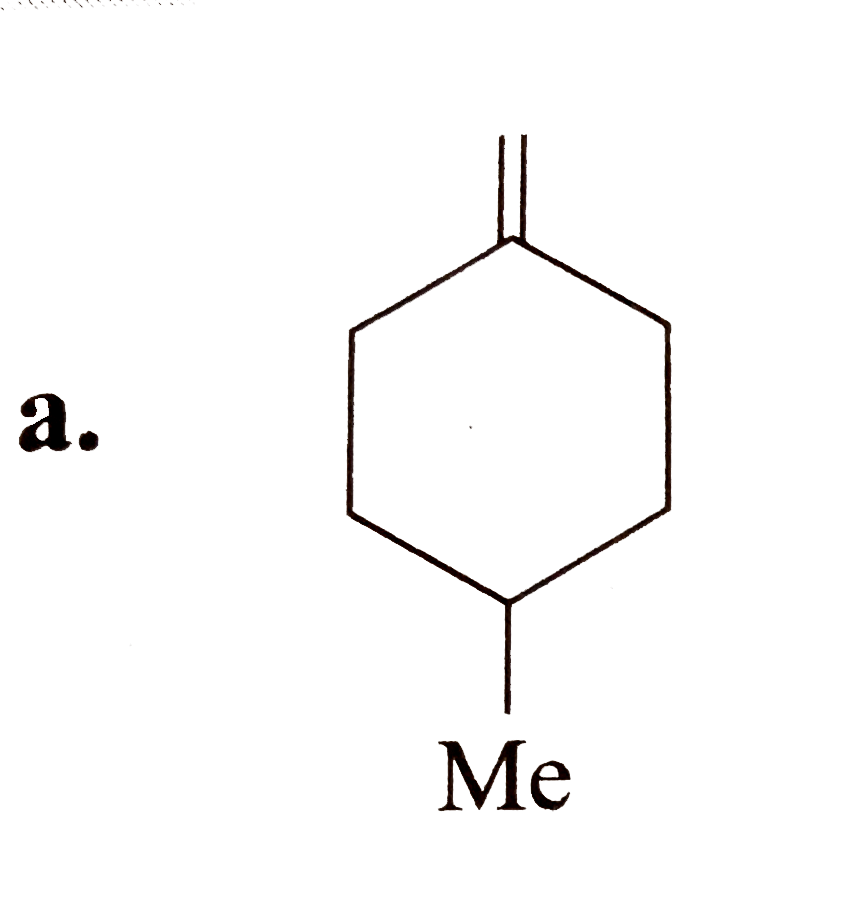 `b.`
`b.` 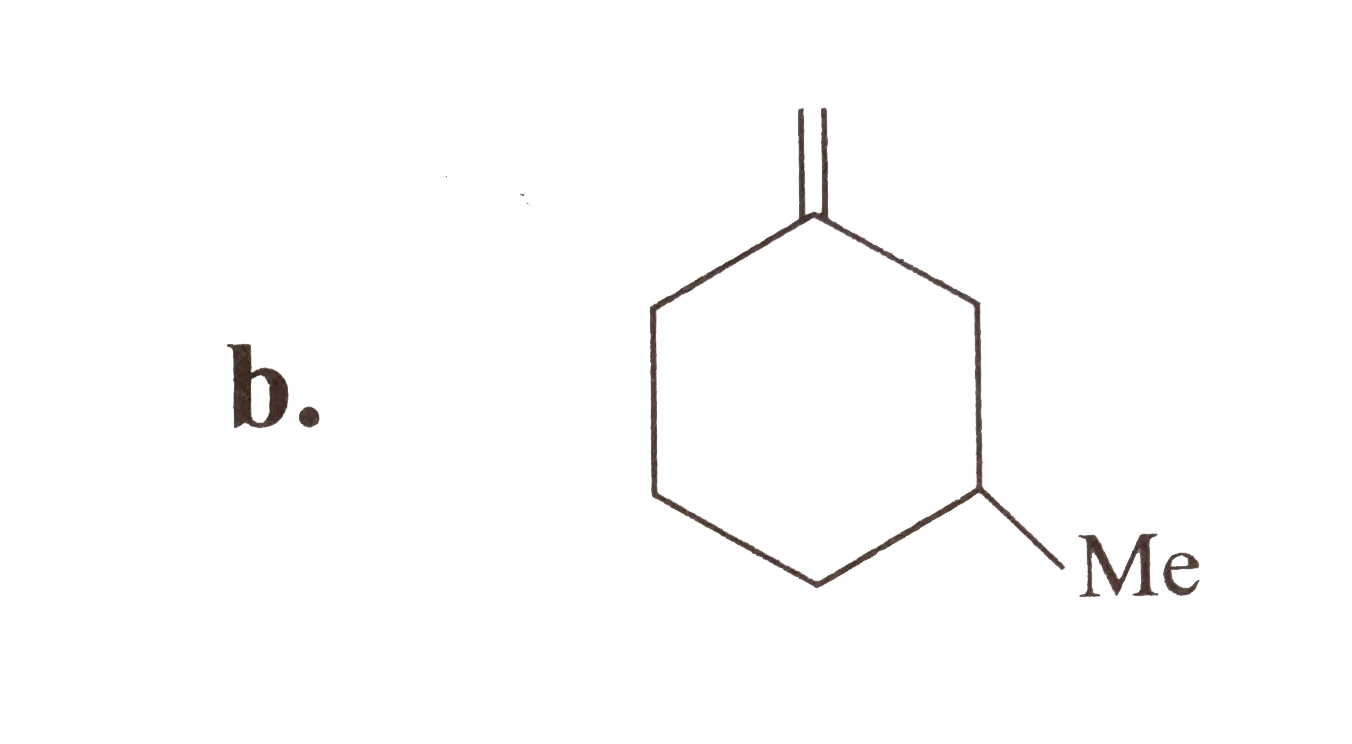
`c.`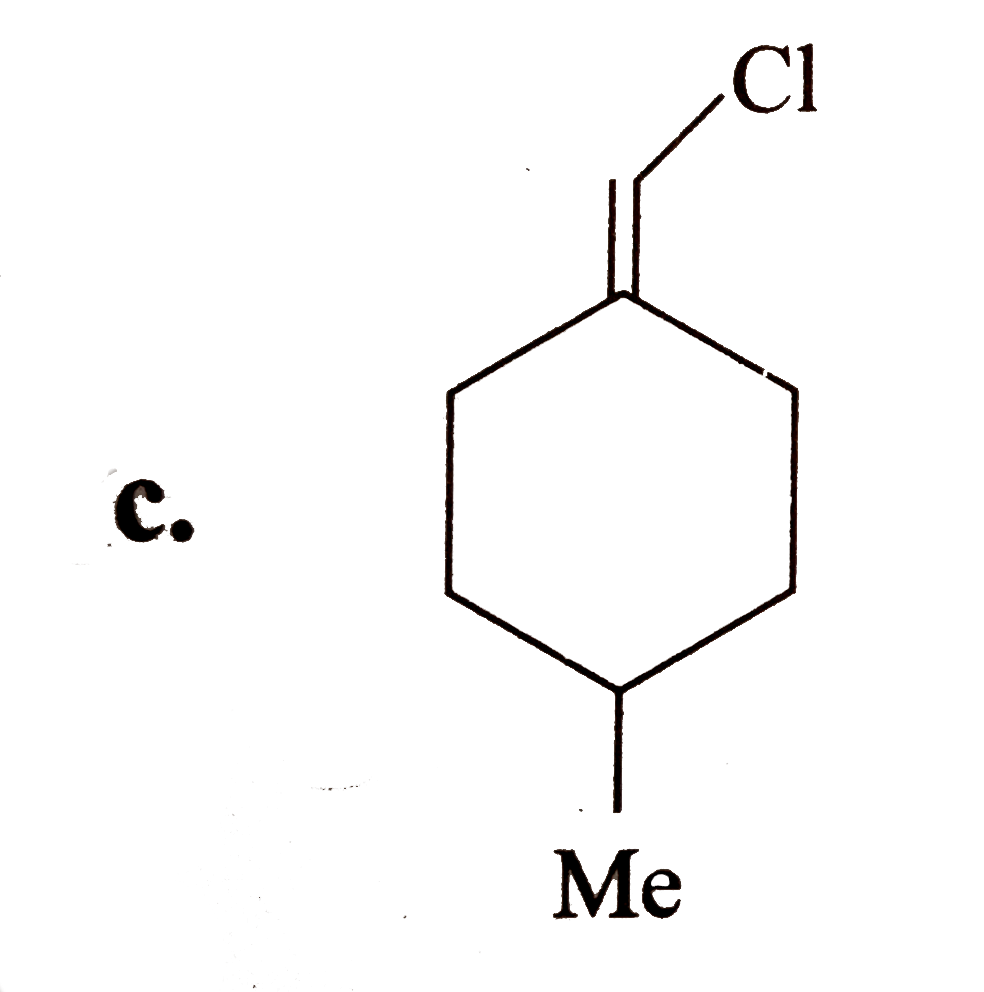 `d.`
`d.` 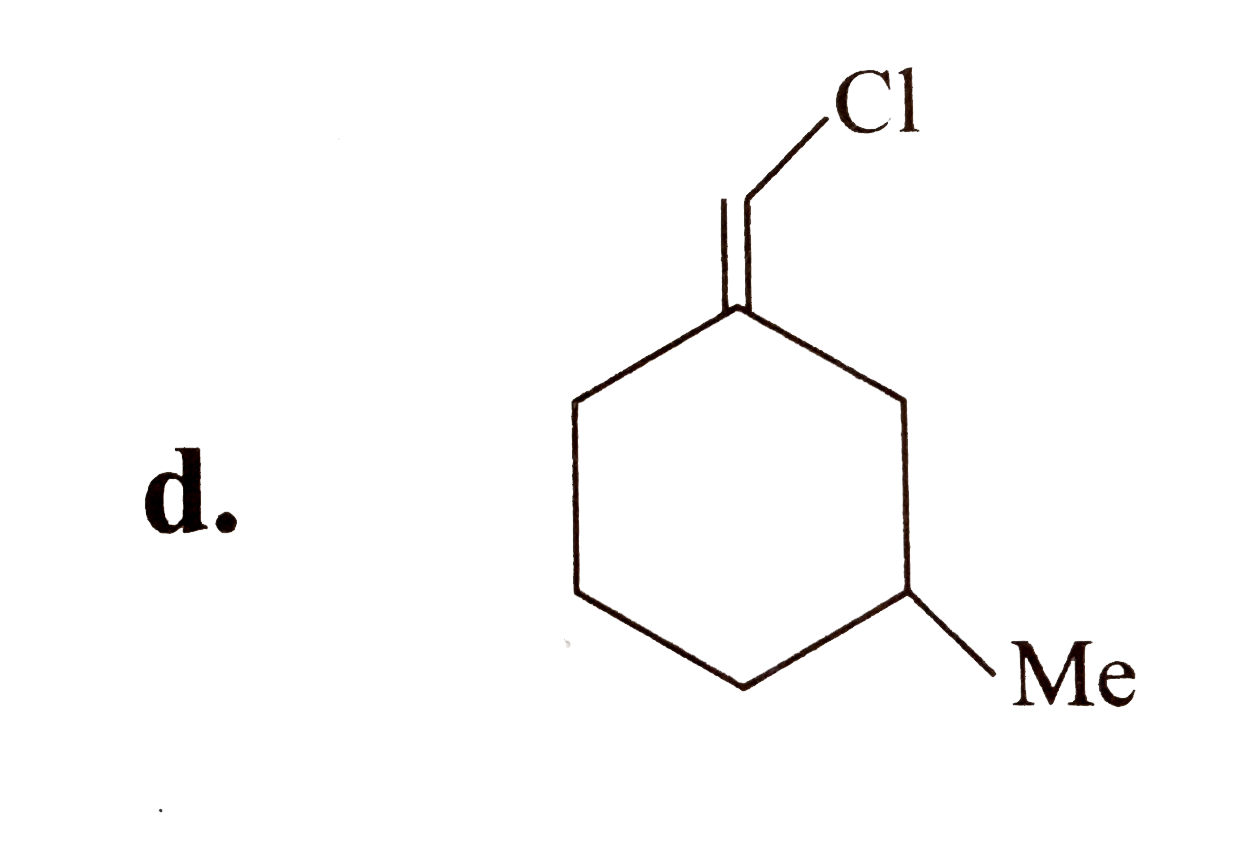 05:16View Solution
05:16View SolutionDraw all the structural , stereo, and cyclic isomers of `C_(4) H_(6)`.
04:30View SolutionFind the `D.U.` and give the possible structures of following compounds `:`
a. `C_(7)H_(7)CL` that gives blcak soot on burning ?
b. `C_(3)H_(6)O`
c. `C_(3)H_(5)N`
d. `CH_(4)O_(3)S`04:50View SolutionArrange the following alcohols in the decreasing order of their ease of dehydration with `H_(2)SO_(4)`.
`a.`
`b.`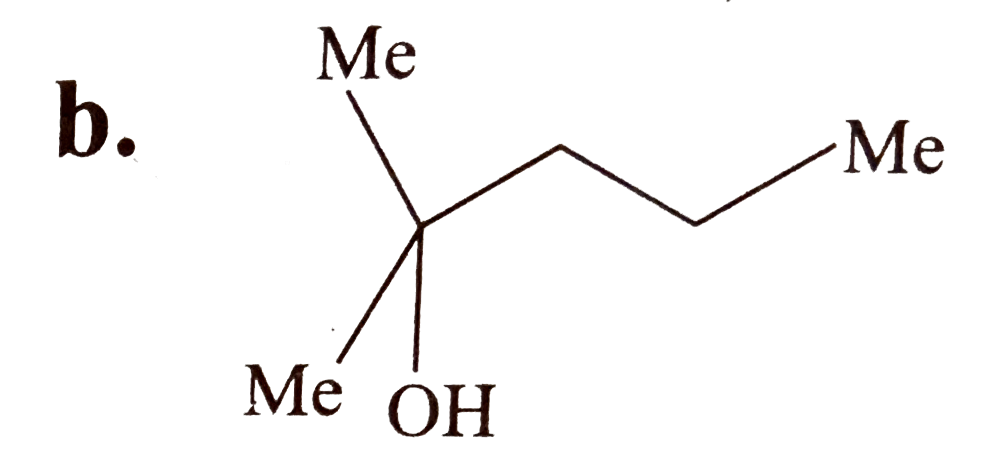
`c.`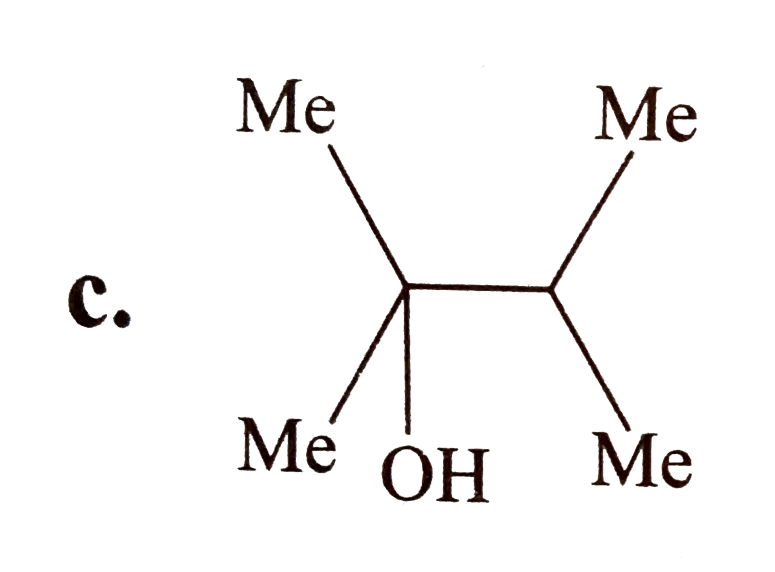
`d.`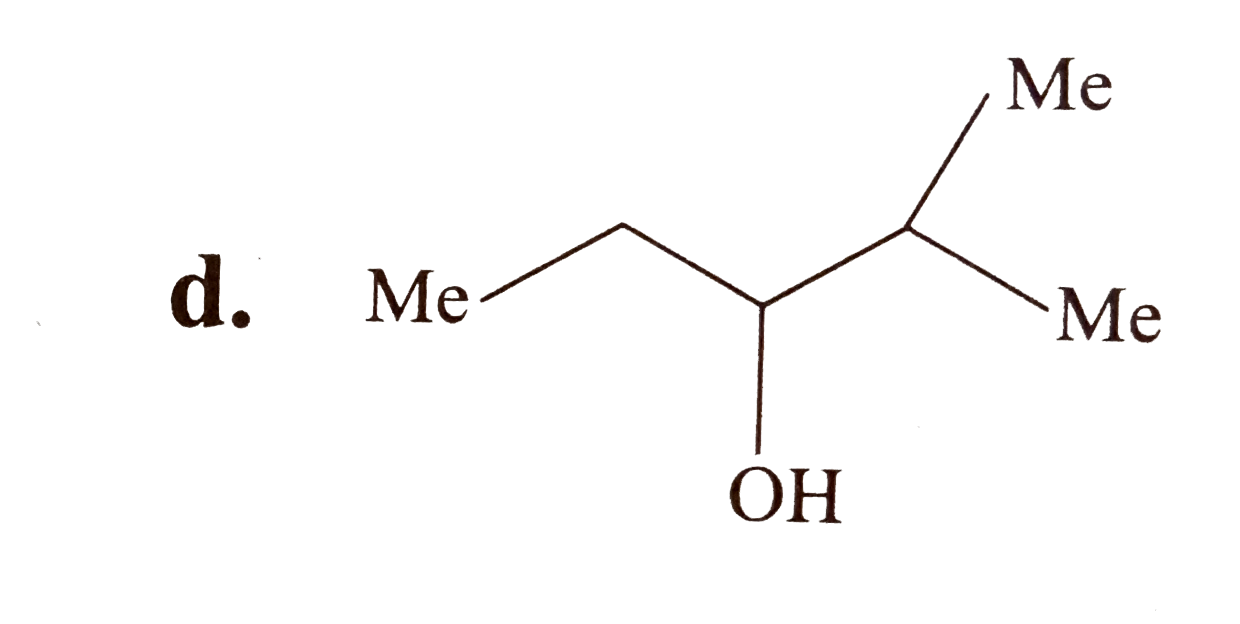
`e.` 05:16View Solution
05:16View SolutionGive the products of the reaction with conc. `H_(2)SO_(4)` of `:`
`a.`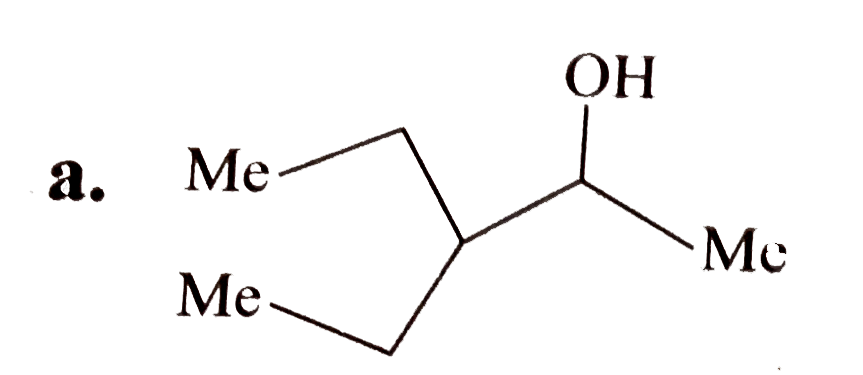
`b.`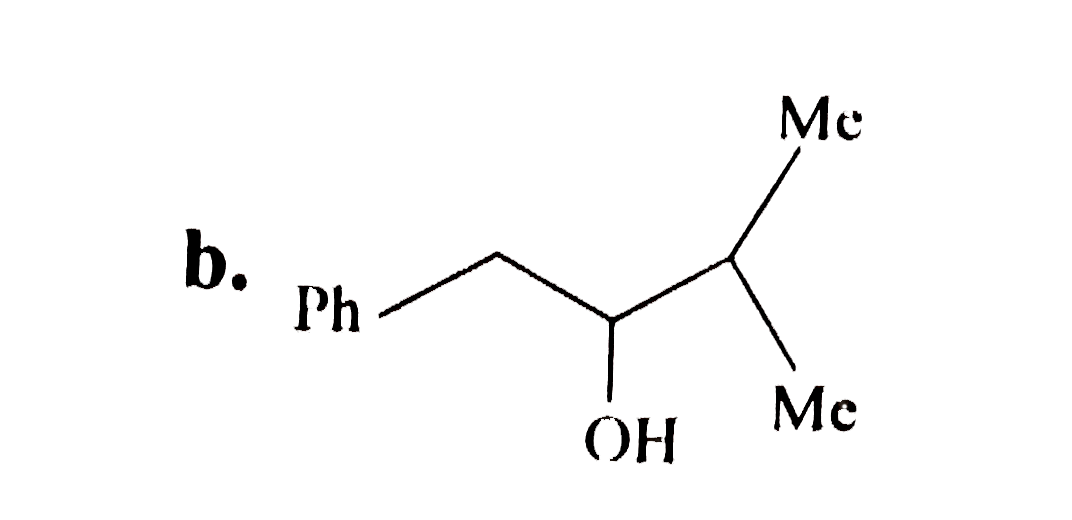
`c.`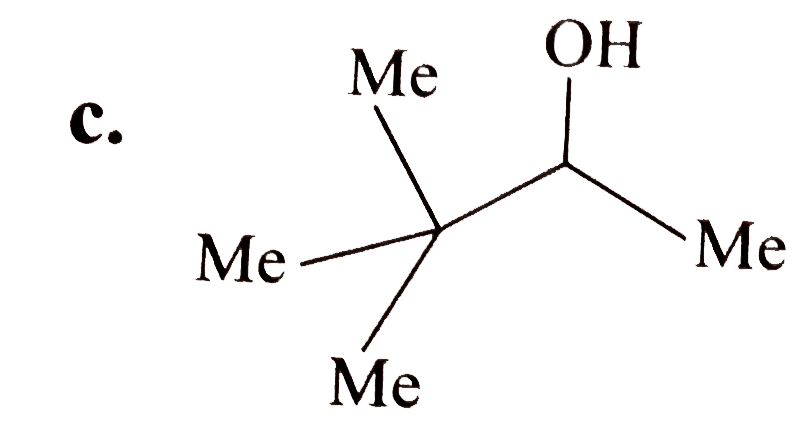
d. 1- Methyl cyclohexanol05:21View SolutionGive the order of the ease of dehydration and also give the major and minor products of `:`
`a.`
`b.`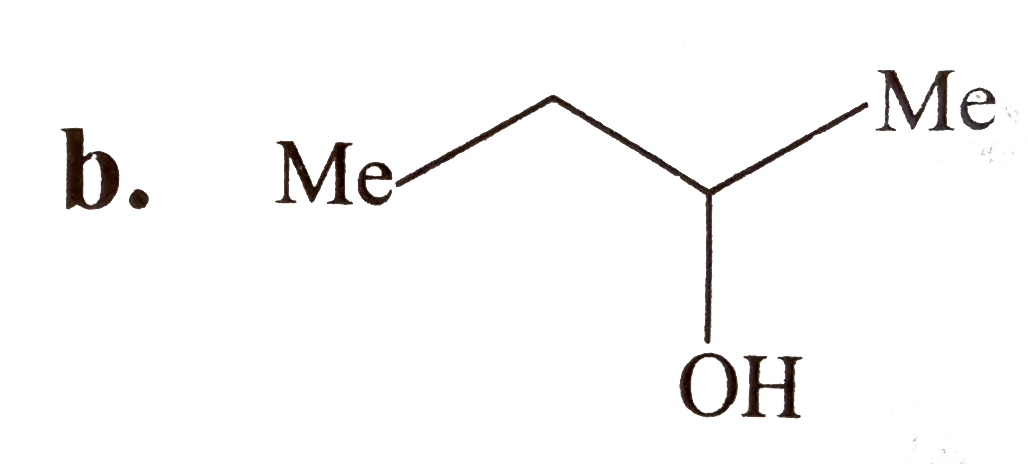 04:13View Solution
04:13View SolutionGive the major and minor products of the dehydration of the given compound.
 04:19View Solution
04:19View SolutionIdentify all the possible alkenes that would be formed on the dehydrohalogenation of the following organic halides with alcoholic `KOH`. Also, identify the major alkene.
a. 1- Chloropentane
b. 2- Chloropentane
c. 2-chloro-2-methyl butane
d. 2-Chloro-3-methyl butane
e. 3- Chloro-2-methyl pentane08:38View SolutionPredict the order of reactivity of following compounds in dehydrohalogenation.
`a.` `I. ` `II.`
`II.` 
`III.`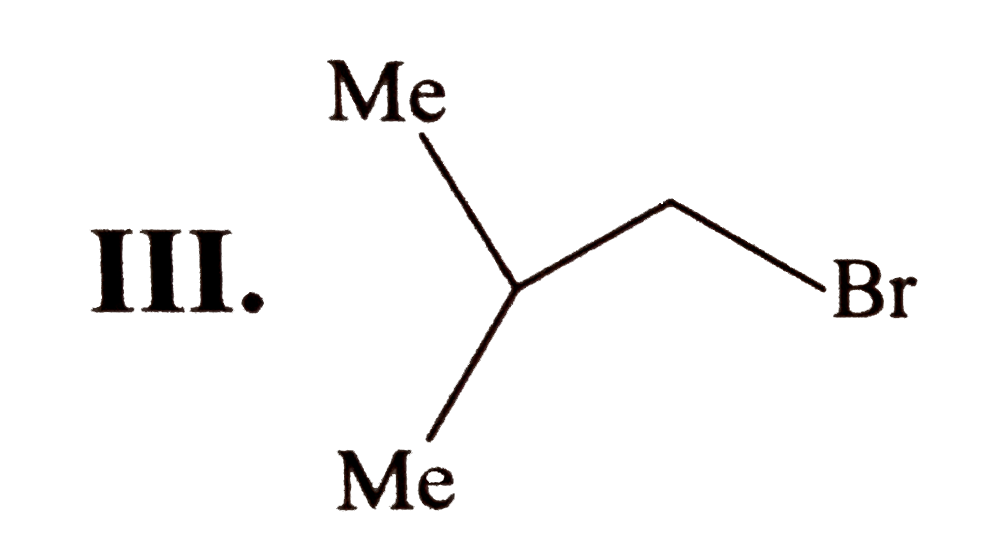 `IV.`
`IV.` 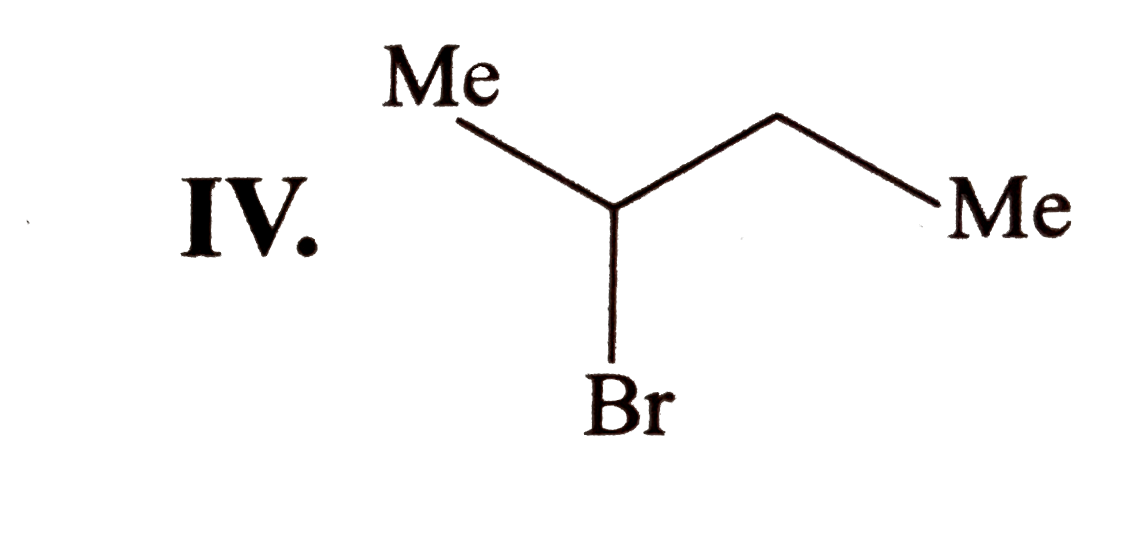
`V.`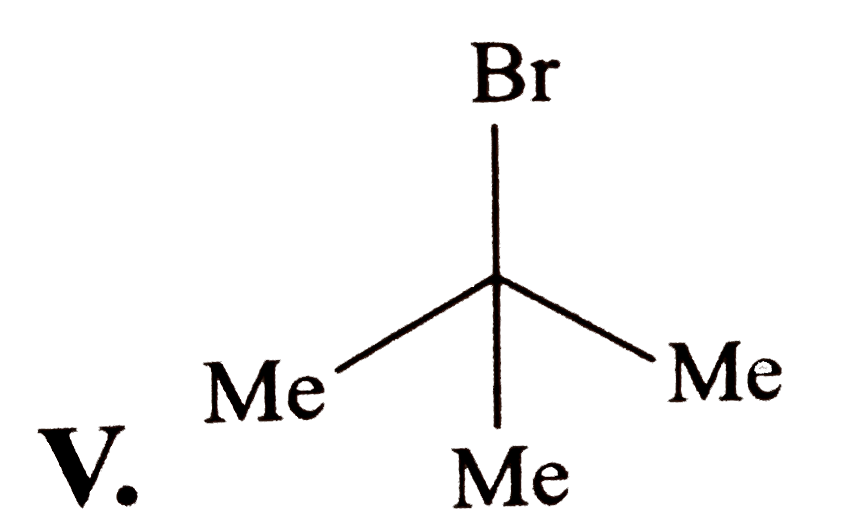
`b.` `I.` `II.`
`II.` 
`III.`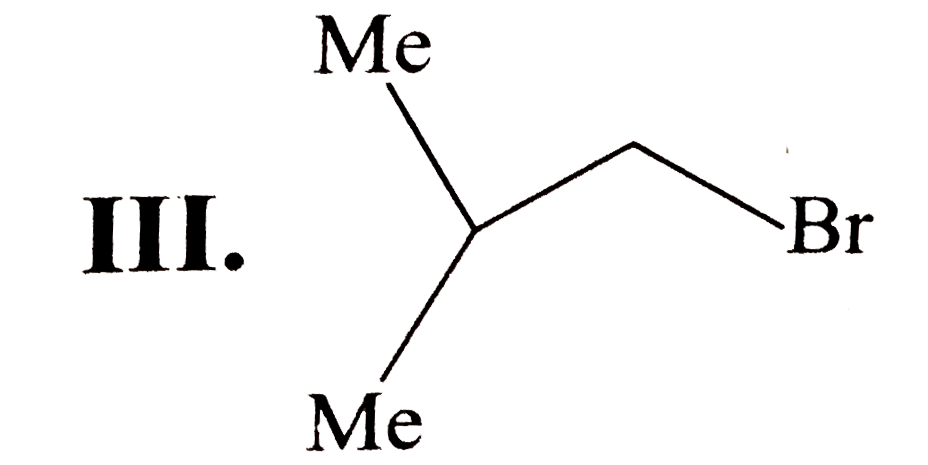 `IV.`
`IV.` 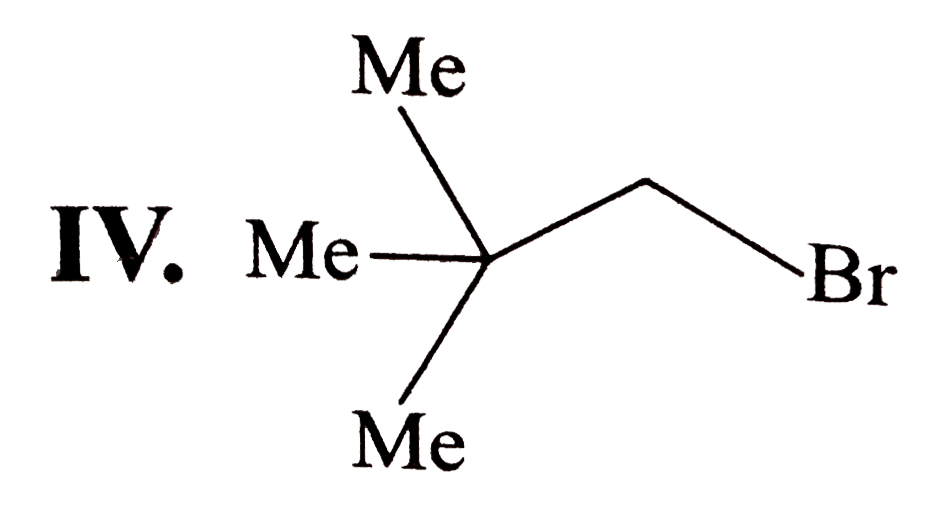 04:30View Solution
04:30View SolutionGive the majore and minor products of the following reactions.
`a.`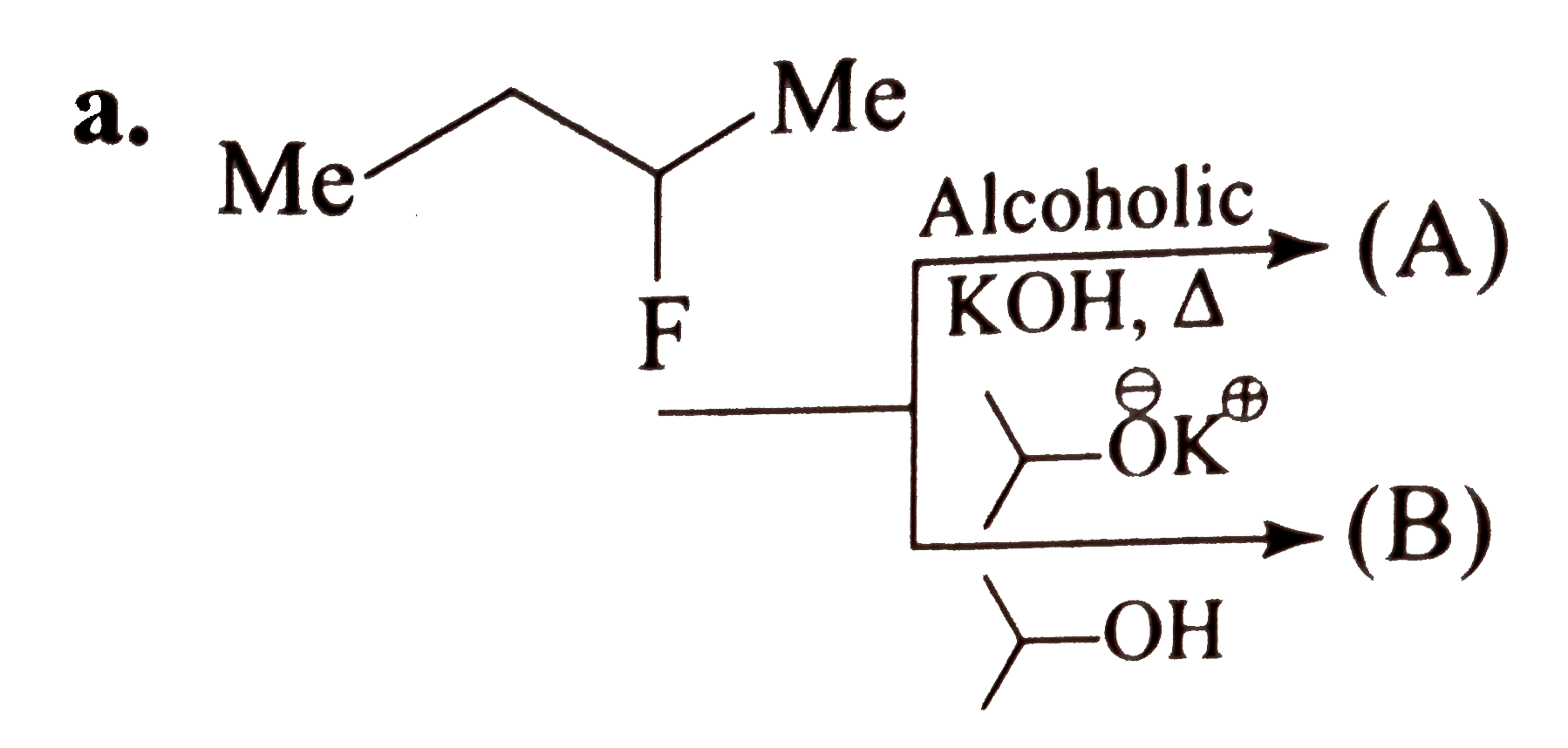
`b.`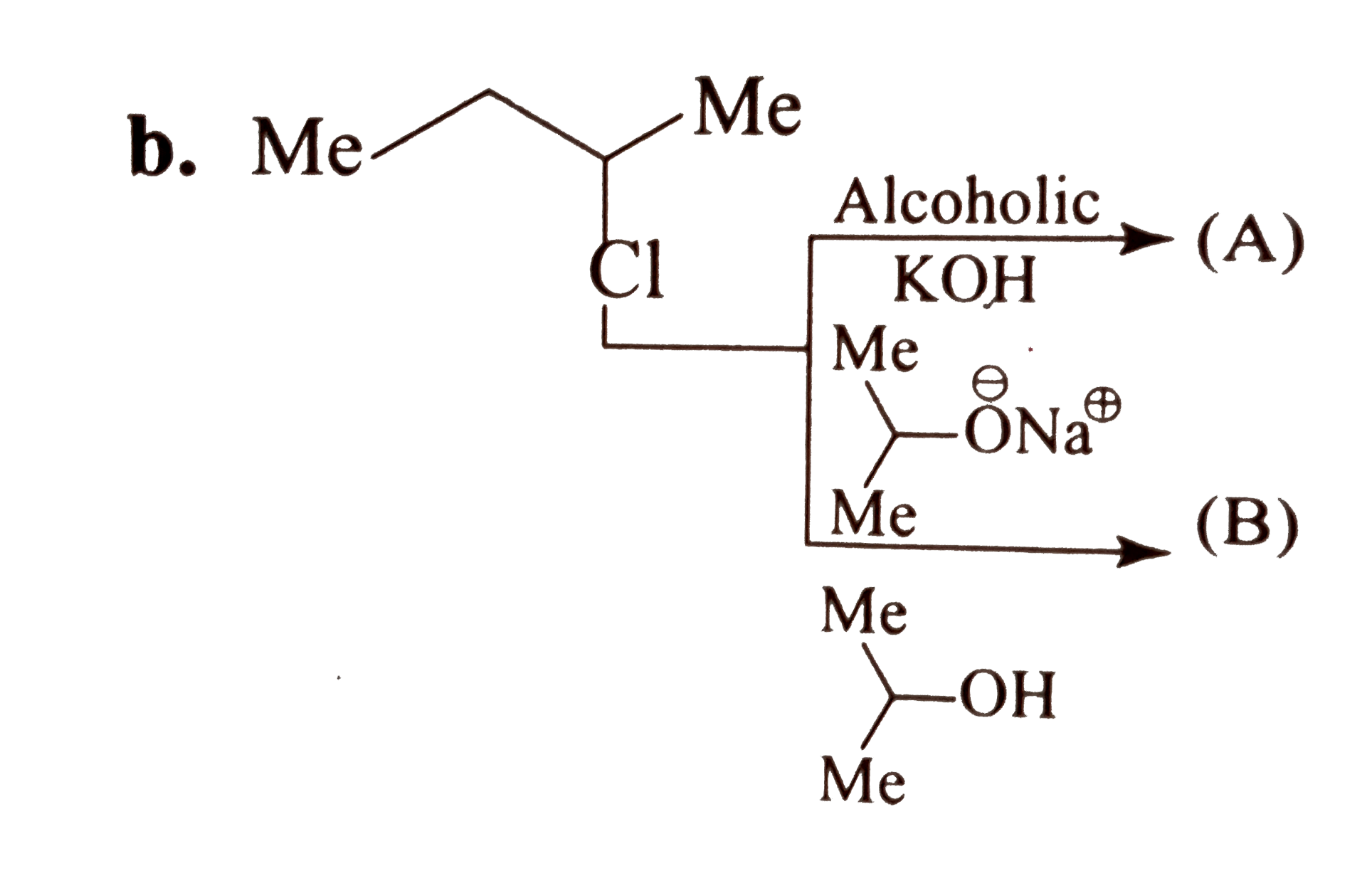 03:22View Solution
03:22View SolutionExplain the stereochemistry of the products from `E2` dehalogenation with `I^(Θ)` of the following.
`a.` `(i)` Meso `-2-3-`dibromobutane and `(ii)` `S,S-2,3-` dibromo`-` butane.
`b.` `E2-` dehydrobromination of `(i)` `R,R-2,3-` dibromobutane and `(ii)` meso`-(R,S)-2,3-` debromobutane
`c.` From which conformation of bromocyclohexane in the `E2` dehydrobromination is best achieved.07:30View SolutionExplain that `(A)` readily forms an alkene with `I^(c-)` but `(B)` does not.
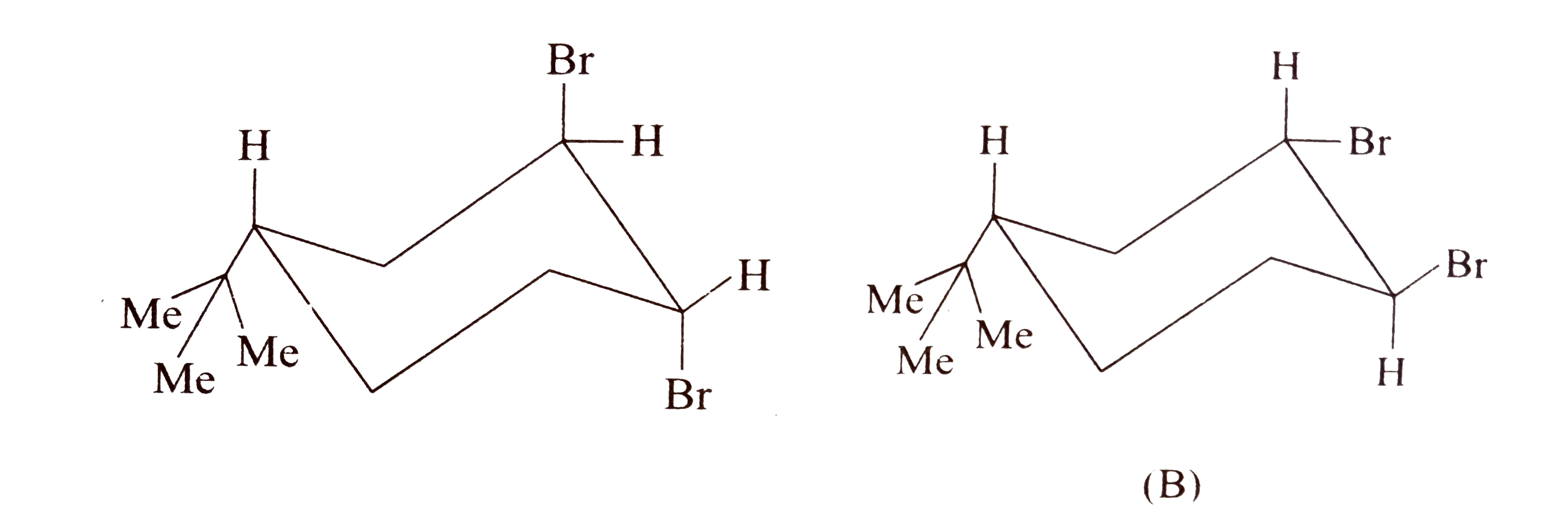 03:14View Solution
03:14View SolutionExplain

Gives two compounds.03:58View SolutionIdentify `A` and `B`.
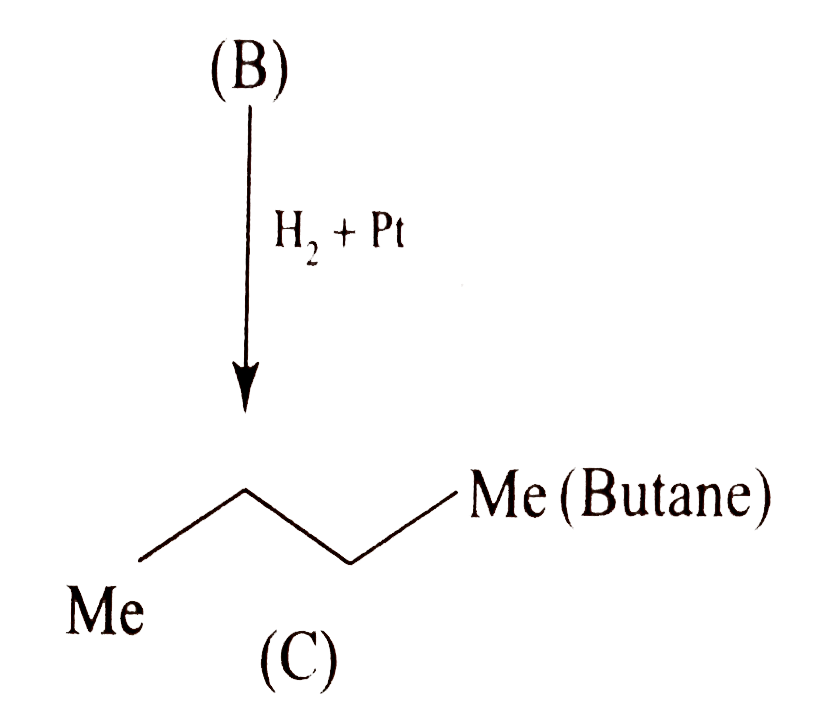
Gas `(B)` gives test for unsaturation, `i.e.,` it decolourises `Br_(2)` water and aqueous `KMnO_(4)` solution.05:12View Solution`i.` Predict the more stable alkene of each pair.
`I.` `a.` `2-` Methyl`-` pent `-2-` ene
`b.` `2,3-`Dimethyl`-` but`-2-`ene`DeltaH_(C)^(@)`
`II.` `c.` Hexane `d.` cis`-` Hex`-3-`ene
`III. e.` trans`-` Hex`-2-`ene `f.` `2-`Methyl`-` pent`-2-`ene
`IV.g.` cis`-` Hex `-3-`ene `b.` trans `-` Hex`-3-` ene03:40View SolutionGive the products with their stereoisomers, if any.
`a.`
`b.`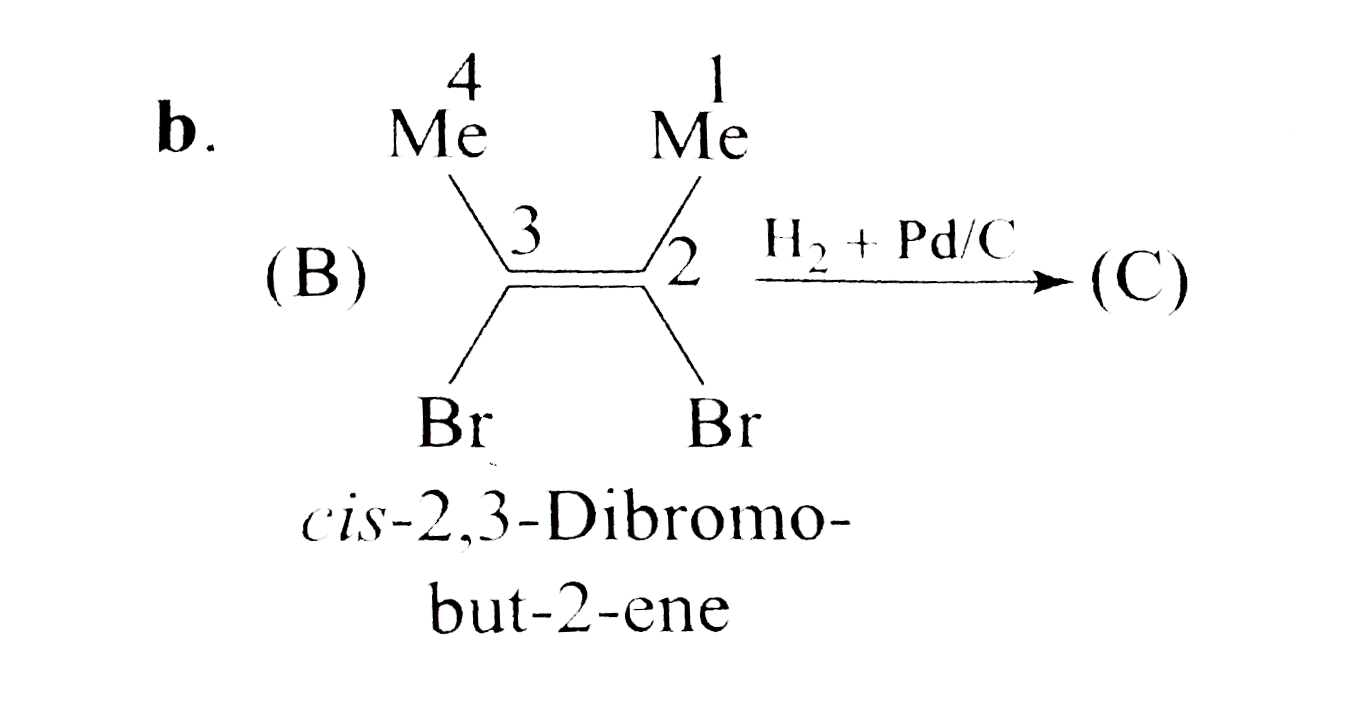
`c.` 05:22View Solution
05:22View SolutionComplete the following with stereo`-` chemistry.
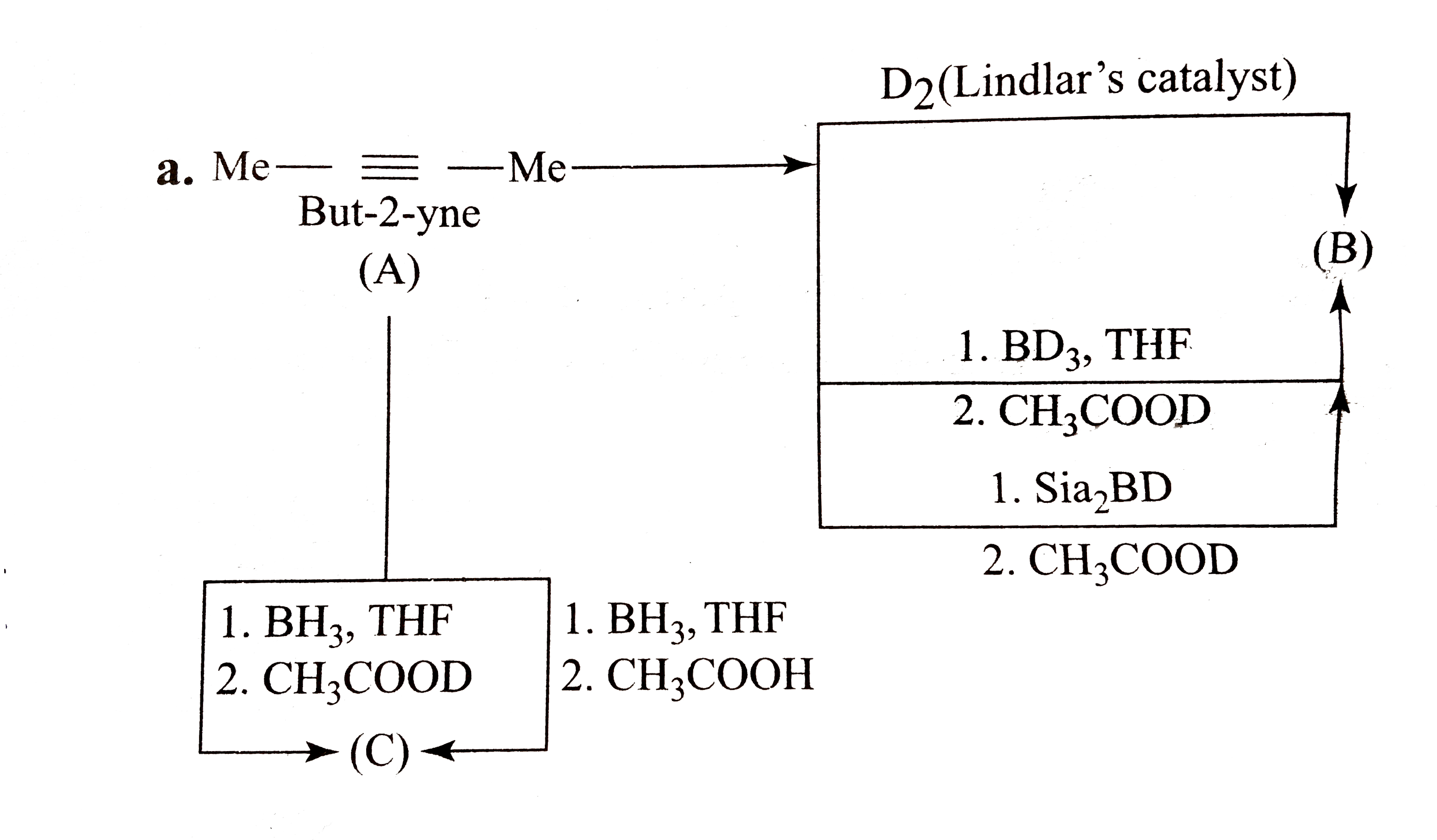 04:09View Solution
04:09View SolutionDesignate the type of each set of `H ` atomes in `6-` methyl `-` hept `-2-`ene and list them in the decreasing order of reactivity towards radical substitution.
02:05View SolutionComplete the following reaction `:`
 02:53View Solution
02:53View SolutionGive the products of the reactions given below.
`b.`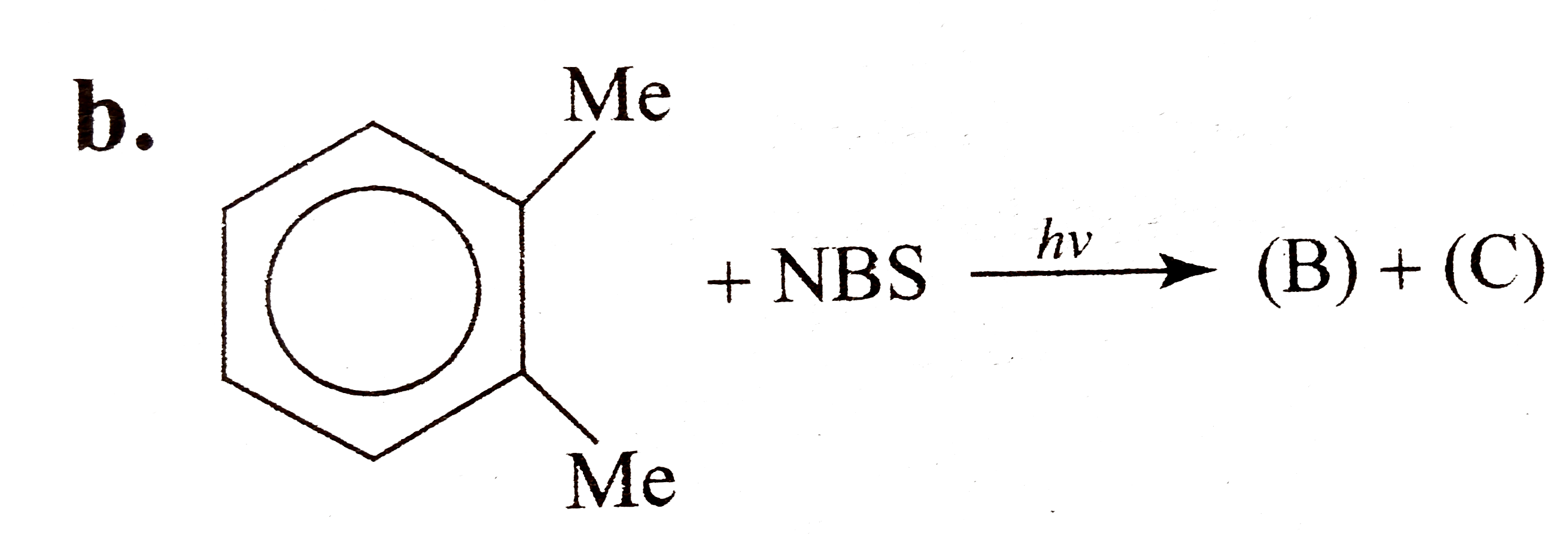
`c.`
`d.`
`e.` 07:27View Solution
07:27View SolutionComplete the following reaction `:` `i.`

`ii.`
`iii.`
`iv.` 09:35View Solution
09:35View SolutionComplete the following reactions `:`
`a.`
`b.`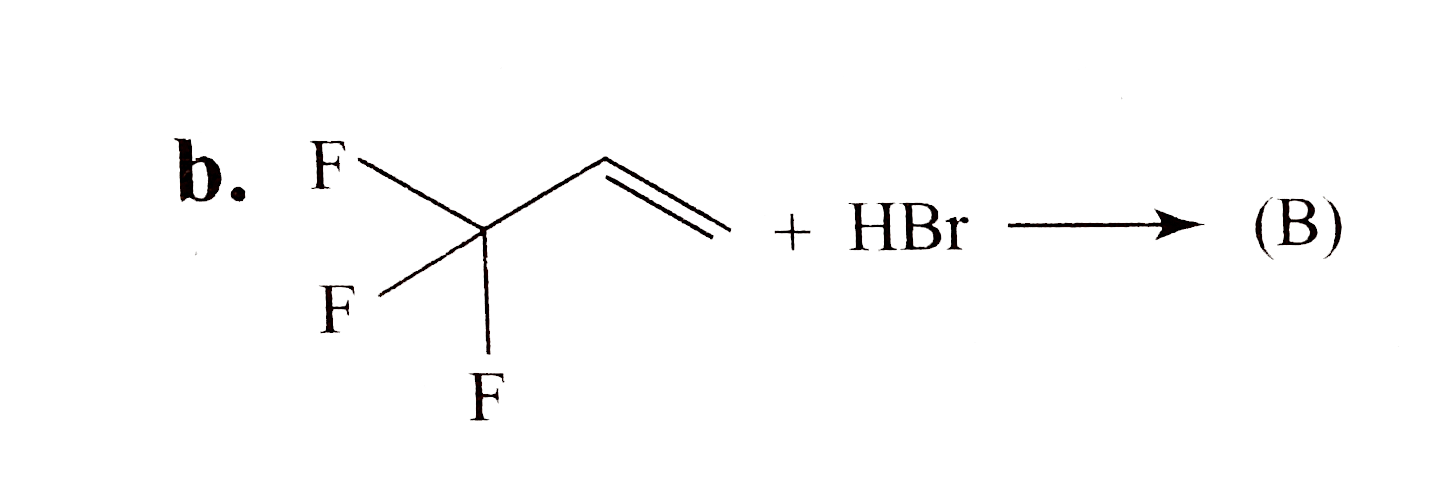
`c.`
`d.`
`e.` 05:02View Solution
05:02View SolutionComplete the following reactions `:`
 06:55View Solution
06:55View SolutionGive the sterochemical products of the following `:`
`a.`
`b.`
`c.`
04:52View SolutionComplete the following reaction `:`
 04:18View Solution
04:18View Solution
Give the major and minor products.04:54View SolutionComplete the following `:`
 04:17View Solution
04:17View SolutionComplete the following `:`
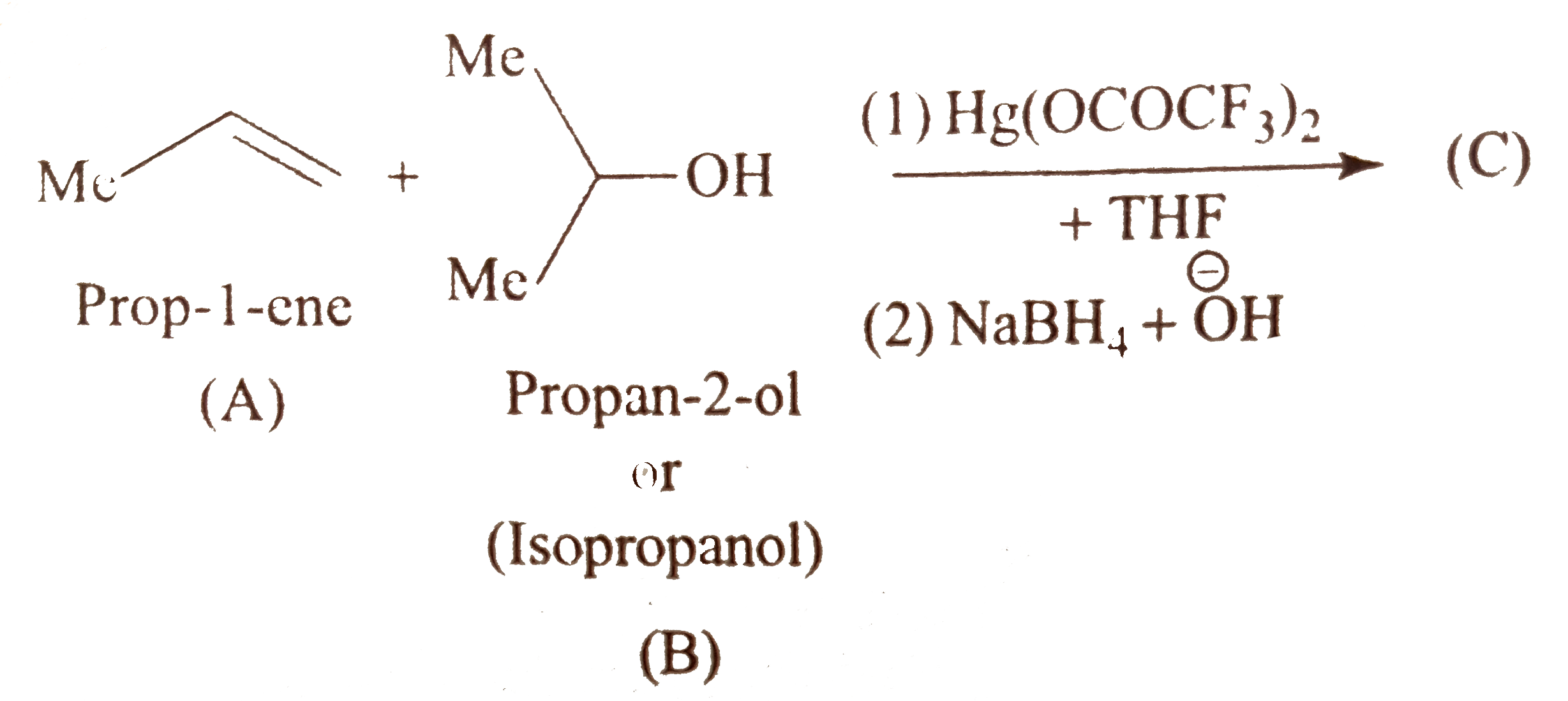 03:03View Solution
03:03View SolutionIdentify (A), (B) and (C ).
`underset((C_(5)H_(10)))underset("Isomeric alkene")((A),(B),(C),)overset(H_(2)+Pt)rarr`2-Methyl butane
(A) and (B) `overset("Oxymercuration")underset(underset((O.M.D.))("demercuration"))rarr` Same `3^(@)` alcohol
(B) and (C) `overset("Hydroboration")underset(underset((H.B.O.))("oxidation"))rarr` Different `1^(@)` alcohol07:12View SolutionComplet the following `:`
 04:33View Solution
04:33View SolutionComplete the following reactions `:`
`i.`
`ii.`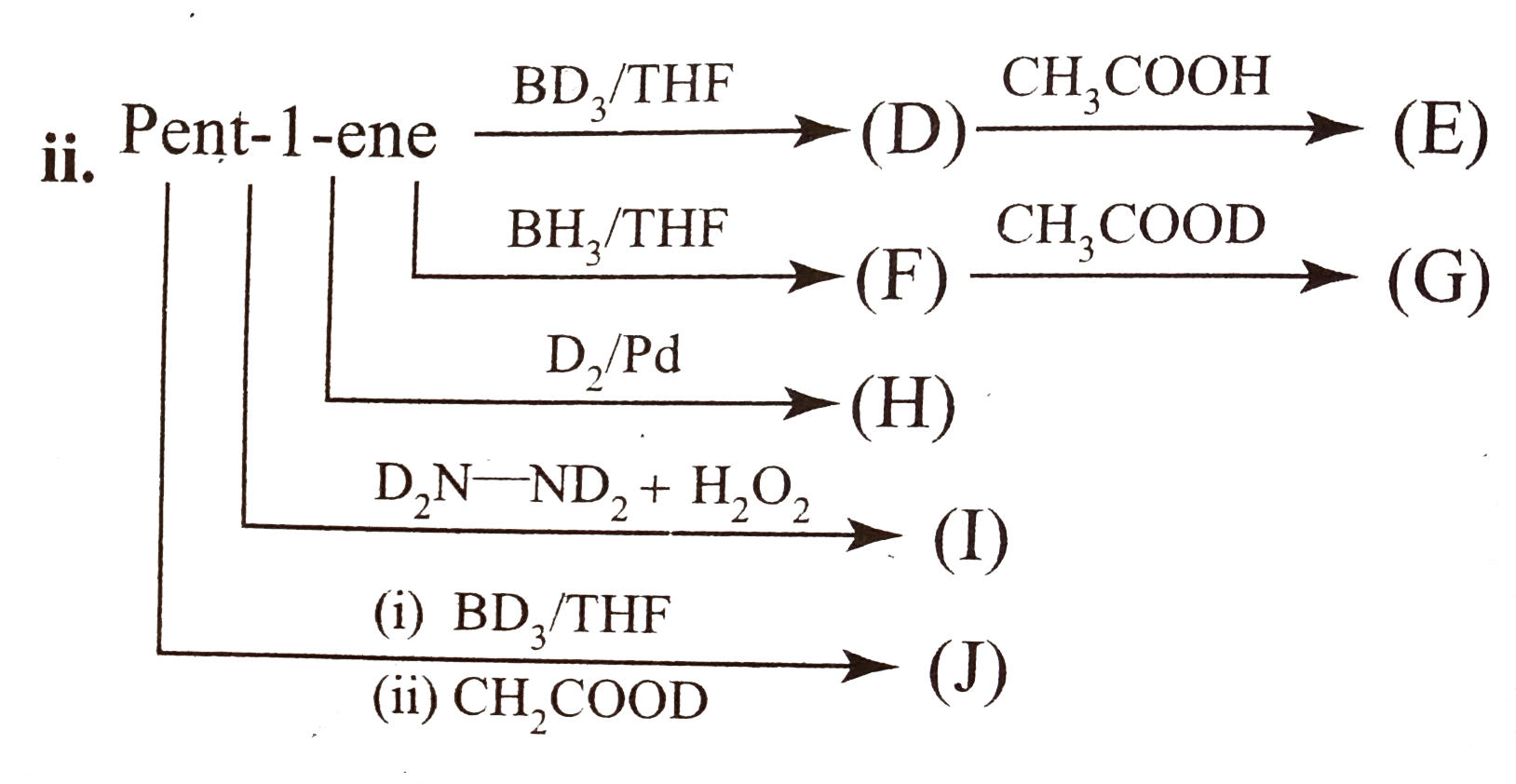 05:52View Solution
05:52View SolutionComplete the following reactions `:`
`i.`
`ii.` 05:06View Solution
05:06View SolutionGive the products of the following `:`
a. Cyclohexene `+CH_(2)N_(2)+hv`
b. trans `-2-` Butene `+CHCI_(3)+KOH`
c. cis -2- Butene`+HCBr_(2)CI+KOH`
d. trans -2- Butene`+HCBr_(2)CI+KOH`
e. 3-Methycyclopentene `+CH_(2)I_(2)+Zn//c u` (couple)
(Simmons `-` Smith reactions)08:42View SolutionComplete the following reactions `:`
.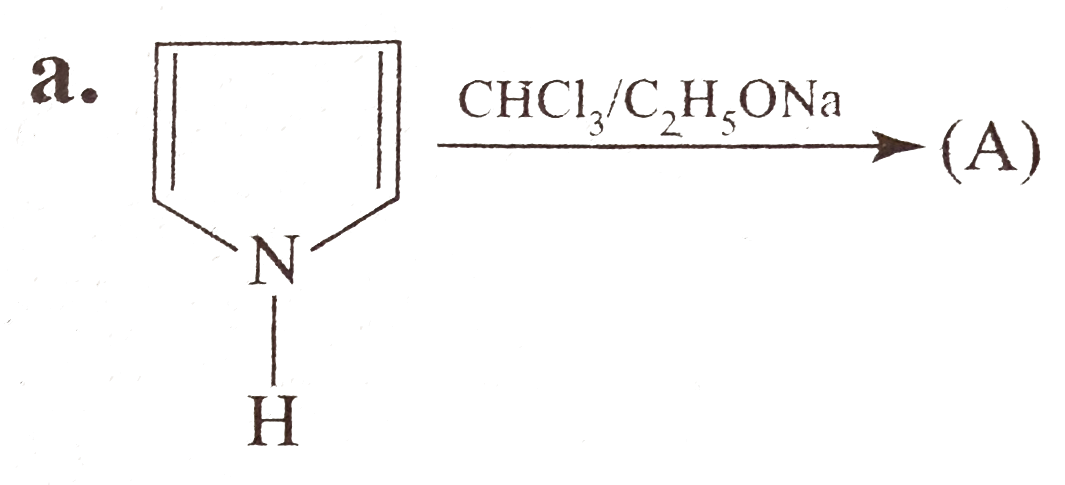 ,04:05View Solution
,04:05View SolutionDraw the structure of Toluene
01:56View SolutionComplete the following `:`
`a.`
`b.` 03:33View Solution
03:33View Solutiona.

b.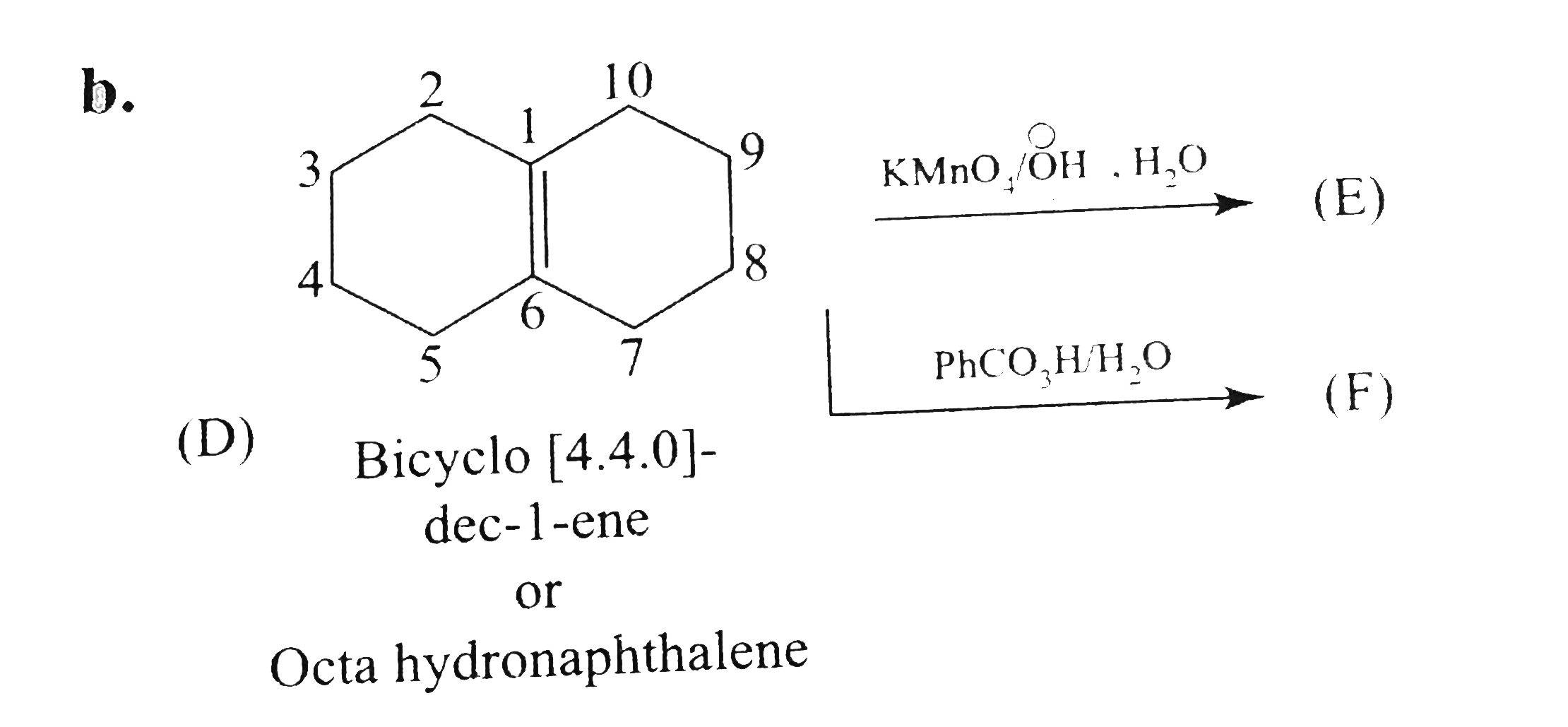
c.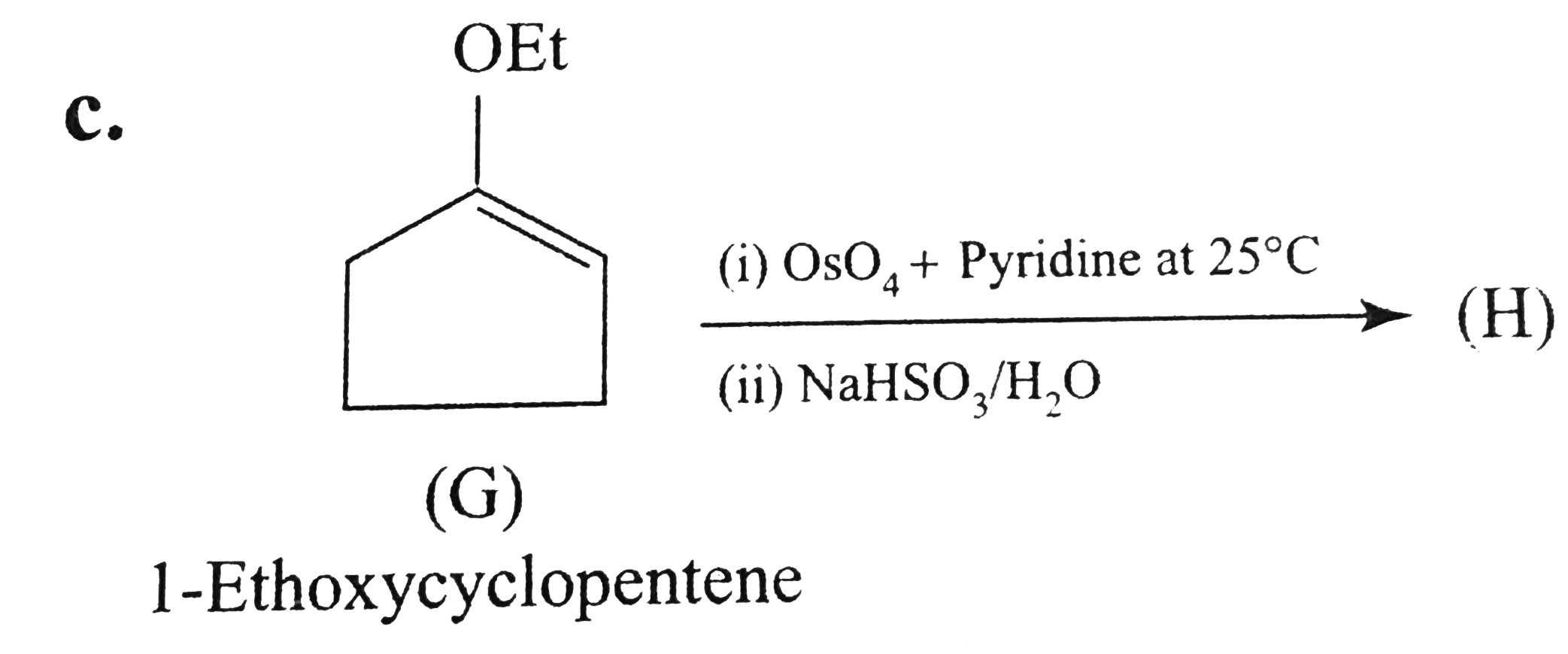
d.
What is the oxidation number of `Mn` in `(B)` and oxidation number of `Os` in `(C)` ?06:21View SolutionConvert `:`
 01:31View Solution
01:31View SolutionCompound `(A)(C_(12)H_(16))` on oxidation with acidic `KMnO_(4)` solution gives acetone and
 . Identify compound `(A)`. 07:45View Solution
. Identify compound `(A)`. 07:45View SolutionCompound `(A) ( C_(6)H_(8))overset([o])(rarr)` Malonic acid only. Identify compound `(A)`.
02:38View SolutionCompound `(A)(C_(8)H_(12))` on oxidation gives an acid `B(C_(4)H_(6)O_(2))`. One mole of compound `(A)` reacts with `3 mol` of `H_(2)` in the presence of `Pt` catalyst to give octane. Identify compound `(A)`.
04:01View SolutionA conjugated alkadiene `(A)(C_(13)H_(22))` on oxidation with acidic `K_(2)Cr_(2)O_(7))` solution gives butan` 2-`one `(B)` and cyclohexane carboxylic acid `(` cyclohexylmethanoic acid `)(C)` . Identigy compound `(A)`.
05:00View Solution Identify A, B, C04:15View Solution
Identify A, B, C04:15View SolutionGive the products of reductive and oxidative ozonolysis of toluene
03:13View SolutionIdentify the compound `(A), (B)`, and `(C).`
Compound (A) `(C_(8)H_(12))overset(1mol)underset(of H_(2)//Pd)rarr(B) (C_(8)H_(14))`
`overset("Doesn not show")overset("stereoismerism")underset((C)(C_(8)H_(12)O_(2)))underset("Symmetrical diketone")(darrO_(3)//Ph_(3)P)`05:46View SolutionGive a chemical test to distinguise between but `-1-`ene and but `-2-`ene.
02:40View SolutionGive a chemical test to distinguish between `1,2-`dibromopropane and `1,3-` dibromopropane.
02:42View Solution
What is compound `(B)` and how is it formed ?07:24View SolutionHow many isomaric dienes with a six-membered ring are possible of the compound with the molecular formula `C_(7)H_(10)` ?
02:28View SolutionComplete the following reactions `:`
`a.`
`b.`
`c.`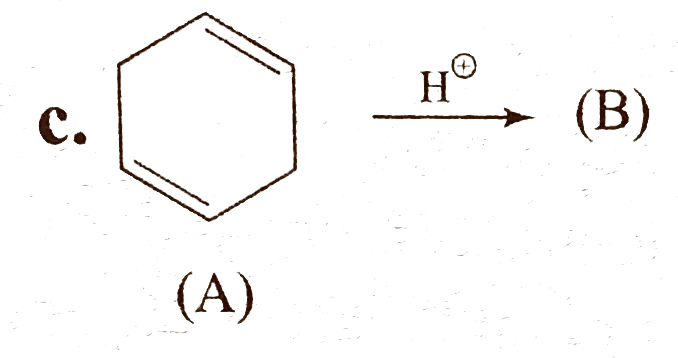 04:50View Solution
04:50View SolutionGive the major products (not stereoisomers) of the following `:`
a.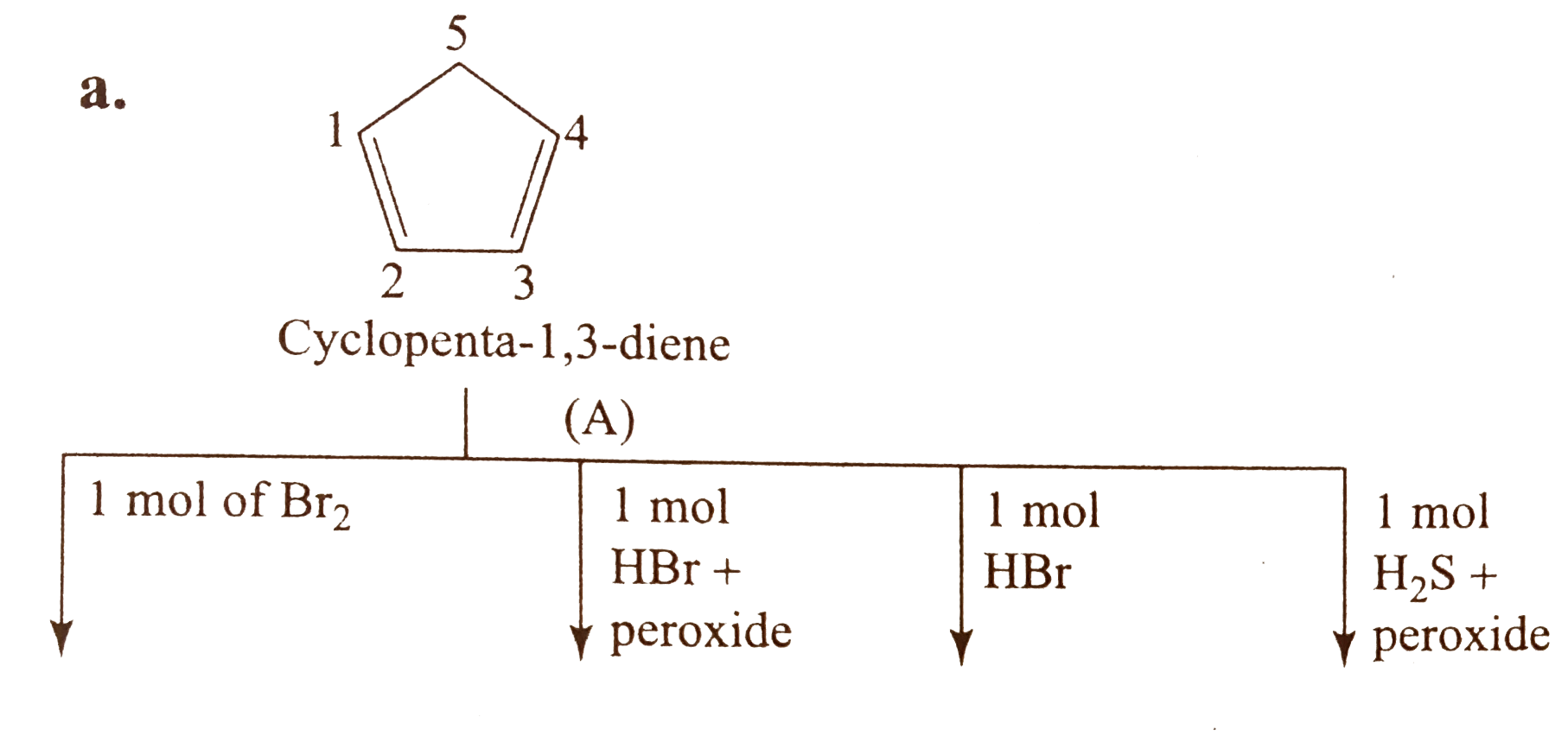 08:23View Solution
08:23View Solution Products
Products
Write all the possible structures and give the structures of the products that are thermodynamically favoured.05:52View SolutionIdentify `(A)` to `(F)` :
 06:23View Solution
06:23View SolutionDistinguish between the given pairs.
`a.`
`b.`
`c.`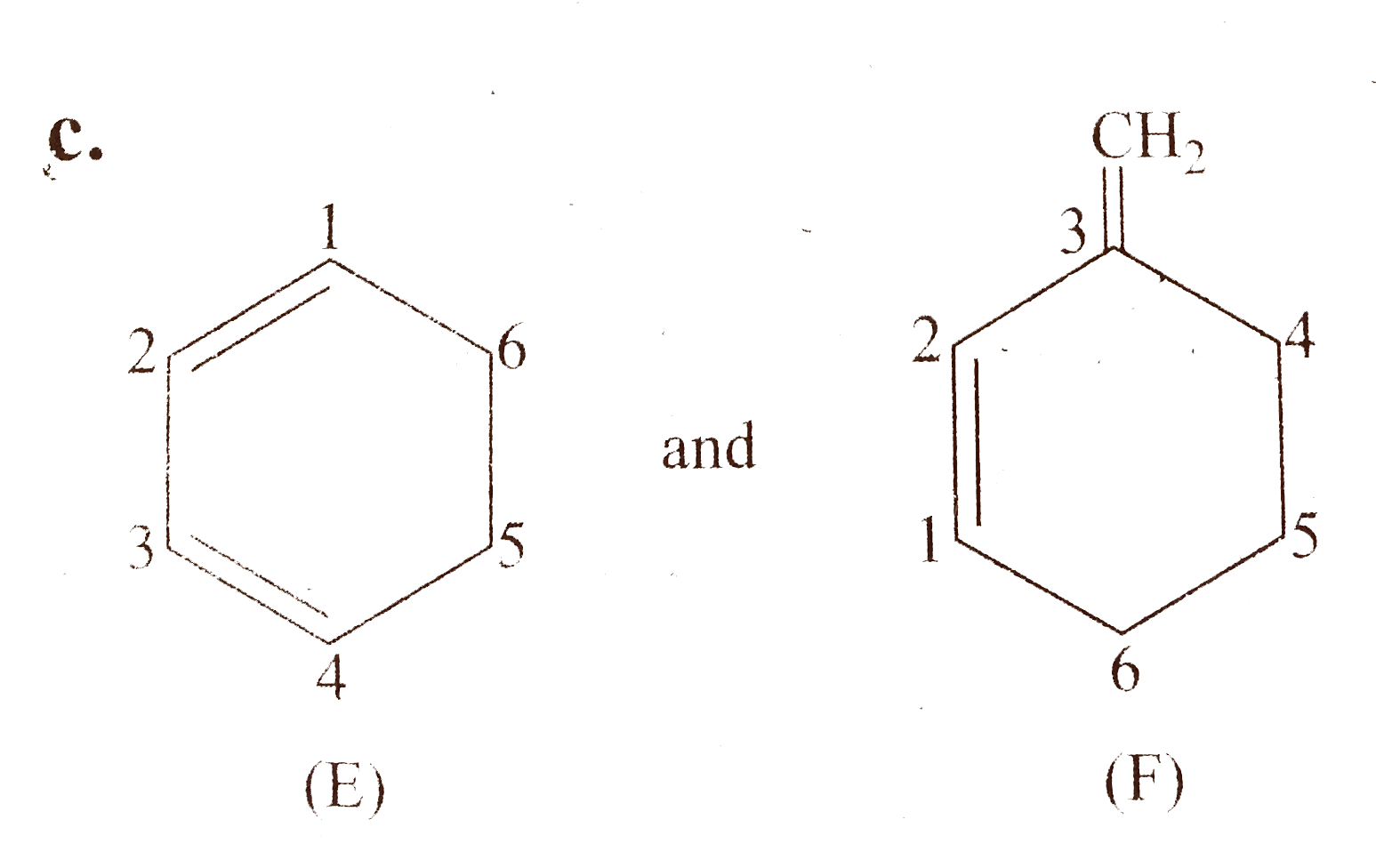
`d.` 05:55View Solution
05:55View SolutionGive the major and minor porducts.
 03:51View Solution
03:51View SolutionGive the structrues of six `C` atom cyclic diene with lowest molecular mass that shows only geometrical isomers (diastereomers) and not optical isomers.
02:41View SolutionIdentify the structure of pentene.
02:16View Solution
illustration questions and complete solutions for chapter ALKENES AND ALKADIENES of CENGAGE CHEMISTRY (ENGLISH) of Class 11
